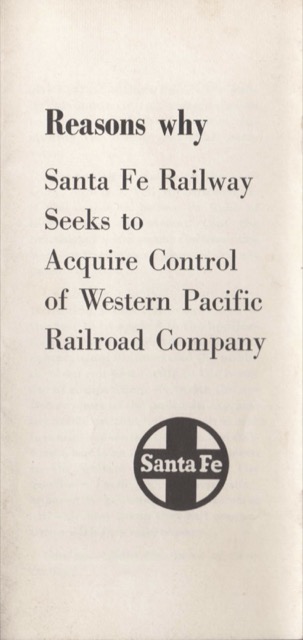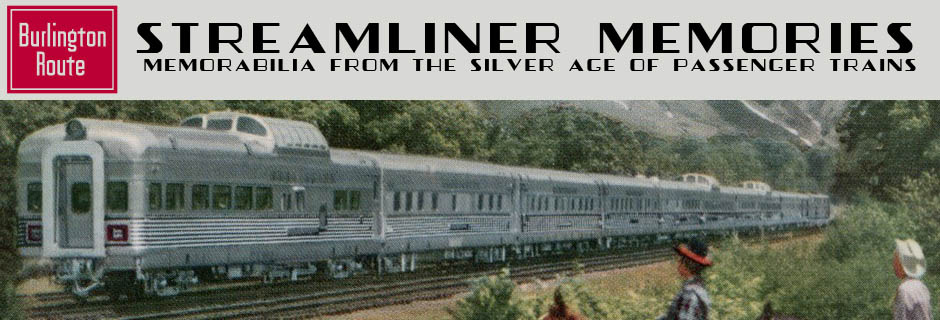Of the more than 100 Class I railroads that existed in 1960, only seven survive today. The definition of the minimum revenues necessary to be considered class I has changed, but even after adjusting for inflation only ten would exist today. This document describes some of the early attempts at mergers that led to this reduction in railroad companies.
 Click image to download a 2.7-MB PDF of this 8-page booklet.
Click image to download a 2.7-MB PDF of this 8-page booklet.
The Western Pacific paralleled the Southern Pacific for its entire length, so SP acquisition of the WP would reduce competition. Rather than let that happen, Santa Fe stepped in to be a white knight. An SF-WP merger would have made more sense as WP and Santa Fe exchanged north-south traffic and Santa Fe didn’t compete with WP on its Oakland-Salt Lake City route. When the SP-WP merger was rejected, Santa Fe stopped its effort to acquire WP.
Unfortunately, when Union Pacific acquired Western Pacific in 1981 and then Southern Pacific in 1996, the competition in the Oakland-Salt Lake corridor was lost. Since Southern Pacific had previously merged with the Rio Grande, competition between Denver and Salt Lake was also weakened. This may be the most important corridor in America with such limited competition. So it probably would have been better if Santa Fe had followed through and purchased the WP in the early 1960s.

It’s interesting to read this plea from 1961. Say what you will about the ICC, part of its role then was preserving competition in freight railroading. I don’t even know why we have to pay for an ICC today. Everything west of the Rockies is shared between the duopoly of the UP and BNSF. Where there is theoretical competition between the two lines, traffic sharing agreements and trackage rights end up just making a split of the pie for each. The ICC’s decisions to allow the SP to buy the WP and the Great Northern to buy the Burlington were the beginning of the end for rail competition. Even worse, we’ve allowed two foreign competitors (CP and CN) to purchase thousands of miles of US rails to give them control of their gateway traffic. At the same time, US railroads are effectively shut out of competing with Canadian roads on their home turf. Between the Canadian and Mexican roads, a large minority of our rails are owned by foreign interests. This has been disastrous for both freight rates and service in this country. I hve no hope that any of this will change in the future, but I do hope that no more class 1’s will be allowed to merge and no foreign railroads will be allowed to buy railroads in the US without access to the same privilege in their countries.
Jim